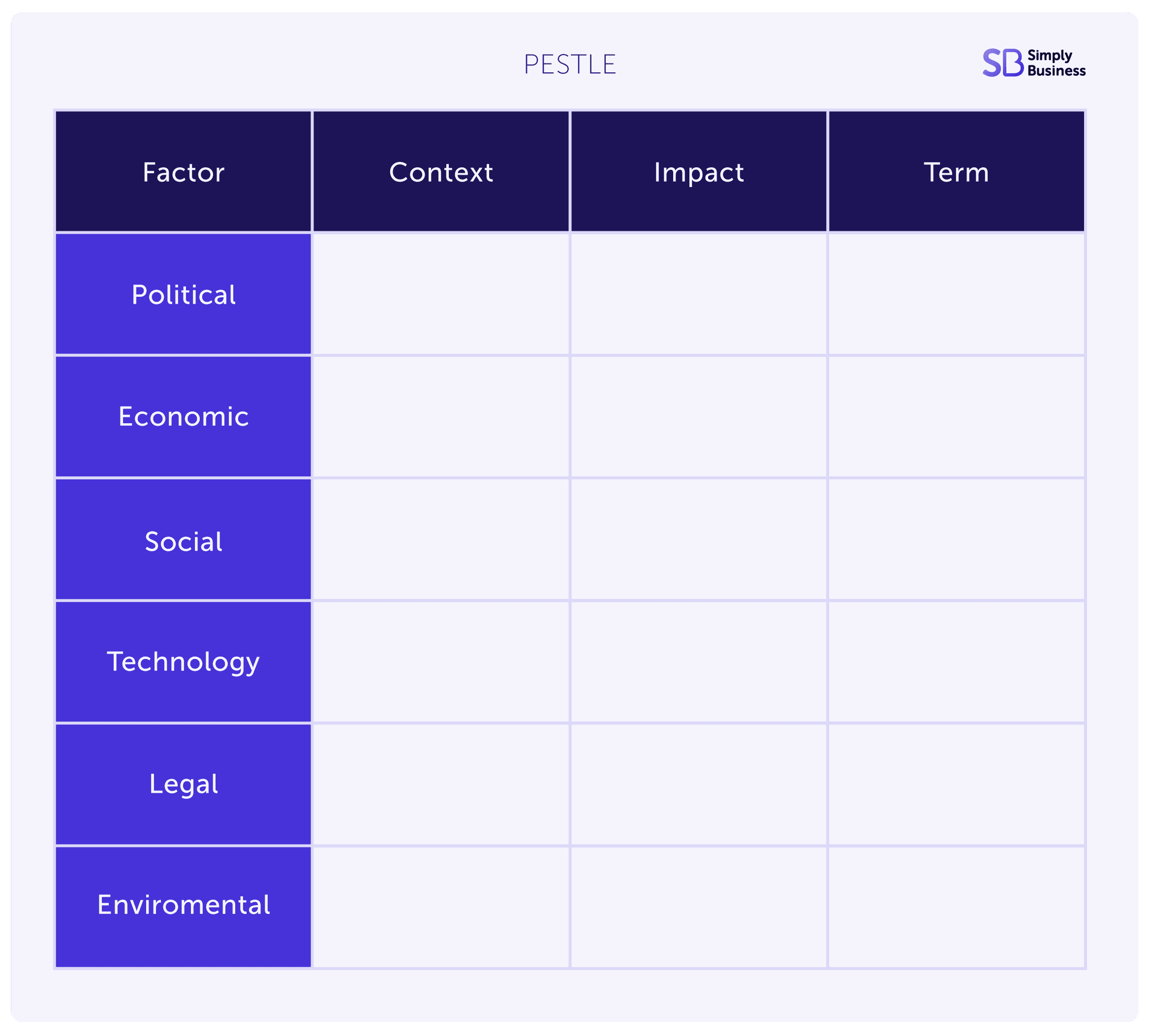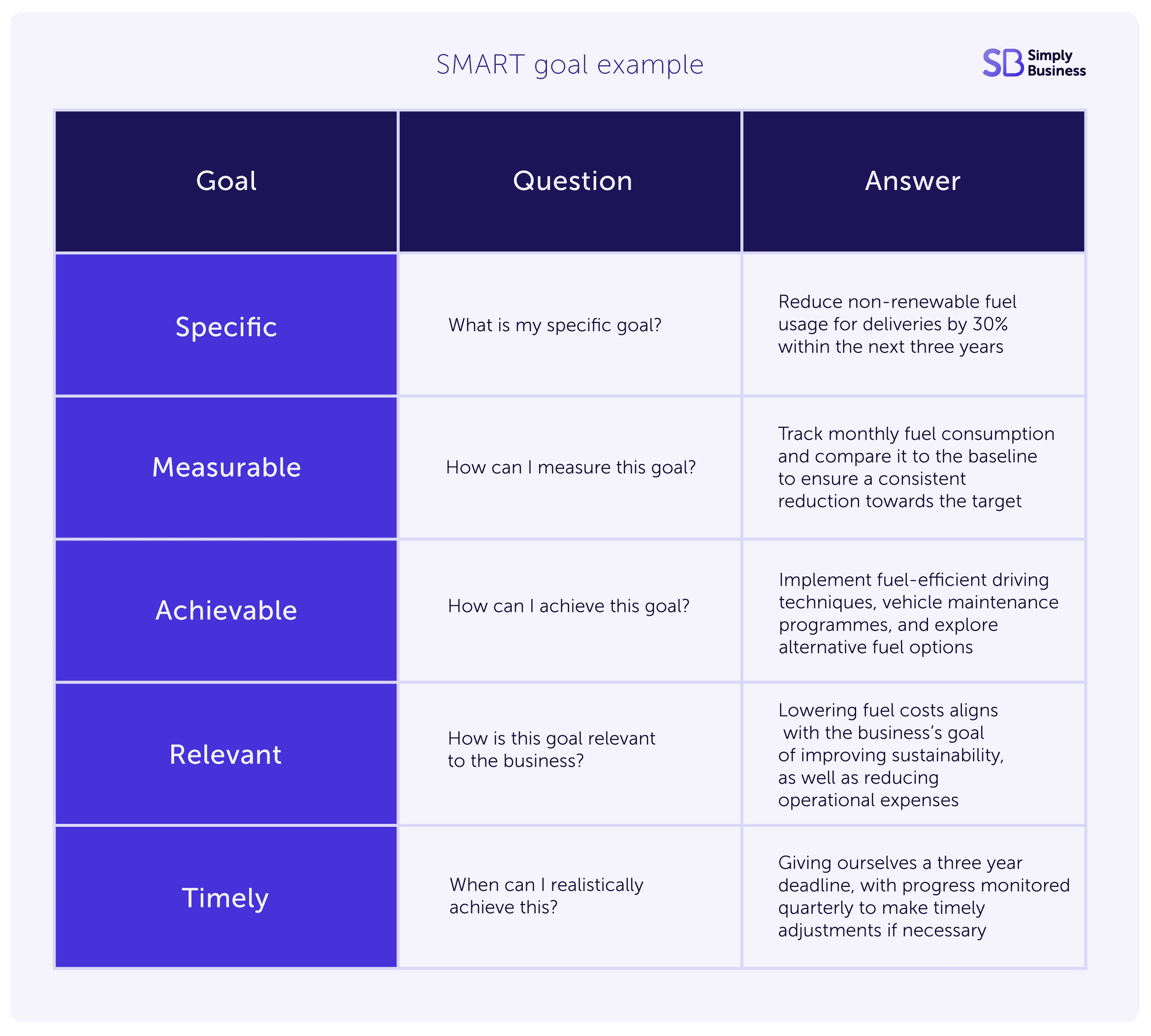What is business strategy? The ultimate guide to growing your small business
9-minute read

Whether you’re a plumber or an accountant, own your own restaurant, or create and sell your own pottery – you may be wondering how you can grow your business. And as knowledgeable as you are in your chosen field, learning how to expand and improve your business is a whole other skill to master.
Follow these steps to discover how creating a strong strategy can help to identify your business goals and, more importantly, how you can achieve them.
What is a business strategy?
A business strategy is a plan you make to find and achieve specific goals in your business. It outlines areas such as how you’ll compete in the market, divide resources, and achieve profits. Consider it the goal post of your objectives, helping you make more effective business decisions.
But business strategy isn’t just a list of things you want to achieve – it’s much more useful than that. Business strategies can be broken down into a variety of methods and tools to better understand your business. It’s a tool for self-assessment and measurement – as well as new attitudes to how you approach your work.
Keep reading to discover business strategy examples that can help your small business grow.
Business strategy for new businesses
If you want to start out on the right track, finalising your business strategy as you’re setting up your business is a good idea. But even if you’re an experienced trader, you can still use these methods to reevaluate your business and make smarter decisions.
Finalise your business plan
You can’t start thinking about a business strategy if you don’t have a business plan in place. A business plan covers everything from your goals to acting as a funding application – some people even refer to it as their business’s ‘bible’.
While your business plan needs to be thorough, it’s important to keep it simple. Whether you’re using your plan internally or externally, it needs to be understood by everyone who reads it. That’s why it’s important to keep it concise and to the point, with accessible language. Don’t use too much jargon related to your field.
Your business plan should start with a strong executive summary. This should act as your introduction, but should also work as a separate document in its own right. The executive summary will cover the key selling points of your business. It’s a good idea to write the summary after the rest of your business plan, as it will help you identify these key points.
A good basis for a business plan is to think about the problem your business is solving. From there you can discuss your solution and offer insight on your competition and market trends. You’ll also need to include legal information, such as details on the structure of your business.
If you need a little guidance, you can use a business plan template to help you get started.
Your vision and mission
Another way you can help identify your priorities is by clarifying your vision and mission statements.
Your mission statement should answer the question of why your business exists – including what you offer to your customers. This can help give your business direction, as all your decisions should reflect your mission. While not a tagline, you can use your mission statement externally to communicate with your customers.
Your vision statement, on the other hand, is a top-level view of your company goals. Unlike a mission statement, your vision statement will be used internally as a way to explain your business goals to your team. Ultimately, this should motivate your team to go above and beyond and achieve the goals you set out.

Create a business proposal
Another important strategy document you need to complete sooner rather than later is a business proposal. If you’re searching for funding or looking to attract clients, a solid business proposal can show you’re thinking critically about your business.
There are two types of business proposal:
- a solicited business proposal, which is when a client requests this from you
- an unsolicited business proposal, which is when you reach out to a potential client with a proposal
Whichever type of proposal you’re going with, it’s important to make sure that it makes sense and provides value for the client. It can also be a good idea to make your business proposal as eye-catching as possible – a visually appealing PDF can be better than a cluttered Word document.
Not a design whizz? This business proposal template is unbranded and editable to work for your business. It also goes over the topics you should include in a business proposal of your own.
Some clients will request a specific format for the proposals they receive, but if they don’t then you should be able to have one basic proposal that covers all relevant information. You can then make any necessary edits for each client you send it to, saving time in the long run.
Business analysis
So you’ve set yourself some business goals, but how do you make sure you’re meeting them? Any good business strategy will also include a way to track your performance. The specific way you measure your progress will differ depending on your business, but here are some popular methods that can help hold you accountable.
SWOT analysis example
A SWOT analysis is one of the most popular ways to gain insight into your business. SWOT is an acronym for:
- Strengths
- Weaknesses
- Opportunities
- Threats

You may do a SWOT analysis as part of a business plan, or outside of this. While a SWOT analysis is a relatively simple method of analysing your business performance, it does have some limitations. The simple formula often means there’s no room for in-depth analysis or commentary – and it can be hard to identify which areas of improvement to focus on first.
It can also help to get outside perspectives when completing a SWOT analysis, so don’t forget to speak to suppliers, customers, and employees to get their input.
As analysing your own performance can be difficult, using a SWOT analysis template can offer some direction on where to start.
So while completing a SWOT analysis is a good idea, it’s always wise to include it as part of your wider business strategy.

PESTLE analysis template
Another business analysis tool to take advantage of is a PESTLE analysis. While a SWOT analysis focuses on internal factors, a PESTLE analysis is all about how external factors can affect the business – as well as how to prepare for them.
PESTLE is yet another acronym, this time standing for:
- Political
- Economic
- Social
- Technology
- Legal
- Environmental
Analysing these factors can then help you to make smarter decisions based on marketing, product development, and organisational development.
Use this handy PESTLE analysis template to help identify which external factors could affect you – whether that’s negative or positive…

Growth strategies and setting goals
It’s important to remember that every business is different and has goals unique to their operations. When deciding what areas to focus on, you need to be realistic about what you can achieve whilst also choosing goals that are genuinely important to you.
Let’s take sustainability as an example – which is a popular goal for many businesses due to its positive impact on the planet. You may choose to focus on a sustainable business strategy if this aligns with your personal values as well as the nature of your business. Maybe you sell eco-friendly products or make an effort to be totally paperless in your accounting firm.
To start with, you’d need to evaluate what you’re currently doing to be sustainable. With this context, you’d then make attainable goals for improvement. One way to do this is by setting a SMART goal, which stands for:
- Specific
- Measurable
- Achievable
- Relevant
- Timely
Perhaps you’re a company that delivers its own stock. Sustainability could be important to your business due to your own beliefs and values, operational reasons, or even as a marketing selling point.
Maybe your goal is to reduce the amount you spend on non-renewable fuel. Here’s an example of this sustainable business goal made using the SMART format.

Looking for ways to develop a more sustainable business strategy? You can assess your company’s sustainability standards through ESG – otherwise known as environmental, social, and governance.
This is a way to evaluate your policies and frameworks and see what you can do to improve. While there’s not one set way to evaluate your ESG, the above article covers a couple of ways you can start – as well as some ESG policy ideas you can introduce to meet your sustainable business goals.
For more tips on setting strong business goals, this guide includes advice from successful entrepreneurs to help you get started.
Your risk management framework
Now that you’ve identified external factors that could be of risk to your business, it’s time to put a risk management plan in place. A business continuity plan can help you assess related risks and plan your response.
These risks could be anything from a wide scale pandemic to a cyber attack. But it can also be used to help tackle more general business problems, such as a client failing to pay or a bout of staff sickness.
Additionally, you may also want to create a crisis management plan. While similar to a business continuity plan, crisis management plans can also include ways to detect future risks and ways to learn from your experiences.
Improving business operations
With goals for the future and a plan for potential risks in place, now you can focus on the daily operations of your business. Depending on the business analysis you’ve already completed, you may have already identified some areas for improvement.
One common pitfall small businesses find themselves in is falling victim to overtrading. This is when a business can’t meet the demand for its products or services. This could be as simple as taking on projects you can’t complete, because you need the money.
However, if the work is never completed and you don’t see the money, it can lead to unbalanced finances which are worse for your business in the long run. Keeping track of your current projects and workload is a good way to prevent this.
Consider project management
A way to make sure your business is running efficiently is to implement proper project management techniques. Setting these up from the beginning can set your business on the path to success.
Agile working
One of the most well-known methods of project delivery is agile. Agile working originated in software development but is now used across a wide range of industries and trades – and it could work for you too.
Agile encourages collaboration, short delivery times, reflection and feedback, and continuous improvement. Shorter deadlines and more visibility of what your team is working on can help small business owners prioritise the most important work.
There’s plenty of different approaches to agile working – you may have even heard of some before, such as scrum and Kanban. Researching these new approaches to working can help you find the right method for your business.
Gantt chart
But maybe agile working isn’t the right fit for your business. Another approach you could consider is using a Gantt chart. A Gantt chart is a highly visual approach to project management – showing your current project in the form of a bar chart. It’s really useful for seeing if any uncompleted tasks are blocking your project’s progress.
Outsourcing
Perhaps by now you’ve realised there are areas of your business operations that don’t come naturally to you. Just because you’re an expert in your field, it doesn’t mean that you have to be an expert on all areas of business strategy.
This is where outsourcing can help – working with other businesses who are experts in their own fields for the good of your business. While outsourcing does come at an additional cost, you’ll be putting your business in capable hands.
Some ideas of areas you could outsource to include marketing, accounting, or even manufacturing.
Growing your business
If your business is running smoothly and you’re ready to take the next step towards growing your business, there are a few things you can do to help. The first is understanding your market share, which helps you to compare the size of your company in relation to your competitors.
If one of your business goals is to be the market leader of your industry, this is a great first step to getting there.
Expenses to consider
Of course, another thing you’ll need to consider when planning your operations are the tax implications of running a business. When you’re just starting out, remember that there’s a £1,000 tax-free trading allowance, so anything you earn under this point can’t be taxed.
Once you pass this threshold, you’ll then need to account for paying your taxes when budgeting. This includes:
Another expense you should consider is insurance. While you can identify your goals and implement a continuity plan in advance, it’s always a good idea to prepare for the unexpected. And having a business insurance policy in place could help you with those unexpected costs if they were to arise.
Business strategy – the bottom line
By now, you should have a clear idea of your business goals – plus ideas of how to improve your operations and safety measures in the event of a crisis. But it’s important to remember to continually review your business operations if you want to succeed in your chosen industry.
Before you go, check out these tips on growing your small business from entrepreneur (and winner of BBC’s The Apprentice) Harpreet Kaur. Hearing from an industry expert like Harpreet can provide you with the inspiration to take your business even further.
And if you’ve finished working on your business strategy, the next step is to market your business to a new audience.
Looking for self-employed insurance?
With Simply Business you can build a single self employed insurance policy combining the covers that are relevant to you. Whether it's public liability insurance, professional indemnity or whatever else you need, we'll run you a quick quote online, and let you decide if we're a good fit.
Start your quote
Written by
Rosanna Parrish
Rosanna Parrish is a Copywriter at Simply Business, specialising in legal and HR content. Trained at London College of Communication, she has been creating content professionally for eight years at publications across the UK and Spain. Starting her career in health insurance, she also worked in education marketing before returning to the insurance world. Rosanna also writes about wellbeing in the workplace. She lives by the sea and does her best writing in coffee shops.
We create this content for general information purposes and it should not be taken as advice. Always take professional advice. Read our full disclaimer
Keep up to date with Simply Business. Subscribe to our monthly newsletter and follow us on social media.
Subscribe to our newsletterInsurance
Public liability insuranceBusiness insuranceProfessional indemnity insuranceEmployers’ liability insuranceLandlord insuranceTradesman insuranceSelf-employed insuranceRestaurant insuranceVan insuranceInsurersAbout
About usOur teamAwardsPress releasesPartners & affiliatesOur charitable workModern Slavery ActSection 172 statementSocial mediaSite mapAddress
6th Floor99 Gresham StreetLondonEC2V 7NG
Northampton 900900 Pavilion DriveNorthamptonNN4 7RG
© Copyright 2024 Simply Business. All Rights Reserved. Simply Business is a trading name of Xbridge Limited which is authorised and regulated by the Financial Conduct Authority (Financial Services Registration No: 313348). Xbridge Limited (No: 3967717) has its registered office at 6th Floor, 99 Gresham Street, London, EC2V 7NG.